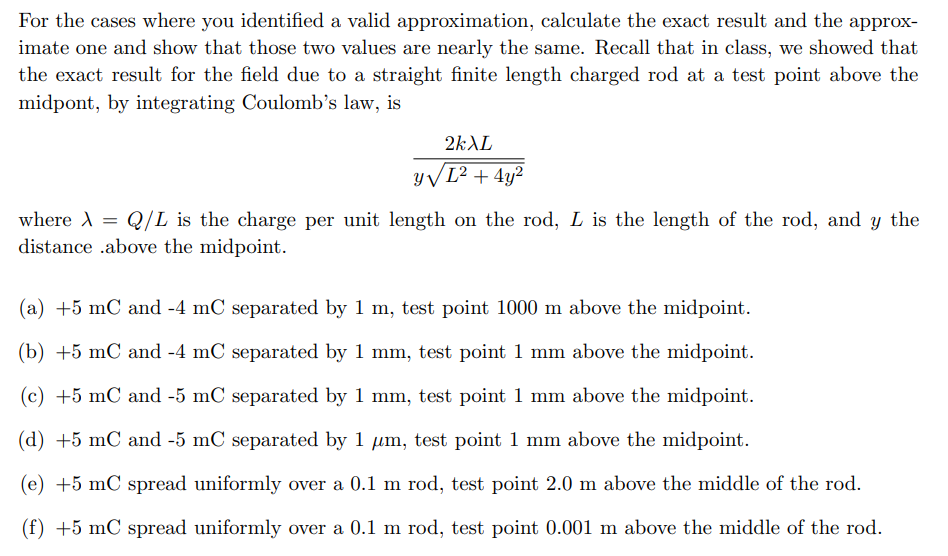Using approximations can be a good way to check your work. The approximations are often much simpler to calculate than an exact result. Thus far, we have seen the monopole approximation (net charge appears as a single point source from far away) and the dipole approximation (the field of a dipole has a simple form, different from that of the monopole) from far away. We have also been recently introduced to the field of an infinitely long, straight, line that is uniformly charged, and learned that the field at a distance r from such a source is 2kλ/r, where λ is the charge on the line per unit length. Practice identifying when you can use an approximation and when you cannot - and if an approximation is valid, which one to use - by considering the following cases. In each case, you are given the sources and a test point location where the field will be evaluated. For each one, decide if the source charges can be treated as if they were a single point charge, a small dipole, a neutral object (field at test point exactly zero,) an infinite line, or none of these. If you chose a single point charge, what is the value of that charge and its distance from the test point? If you chose a dipole, what is the dipole moment and its distance from the test point?
Using approximations can be a good way to check your work. The approximations are often much
simpler to calculate than an exact result. Thus far, we have seen the monopole approximation (net
charge appears as a single point source from far away) and the dipole approximation (the field of a
dipole has a simple form, different from that of the monopole) from far away. We have also been
recently introduced to the field of an infinitely long, straight, line that is uniformly charged, and
learned that the field at a distance r from such a source is 2kλ/r, where λ is the charge on the line
per unit length. Practice identifying when you can use an approximation and when you cannot -
and if an approximation is valid, which one to use - by considering the following cases. In each case,
you are given the sources and a test point location where the field will be evaluated. For each one,
decide if the source charges can be treated as if they were a single point charge, a small dipole, a
neutral object (field at test point exactly zero,) an infinite line, or none of these. If you chose a
single point charge, what is the value of that charge and its distance from the test point? If you
chose a dipole, what is the dipole moment and its distance from the test point?

Trending now
This is a popular solution!
Step by step
Solved in 5 steps with 8 images

can someone do d, e, and f and draw them out?
Can someone redo this problem or explain to me how tan theta = 1/.5?